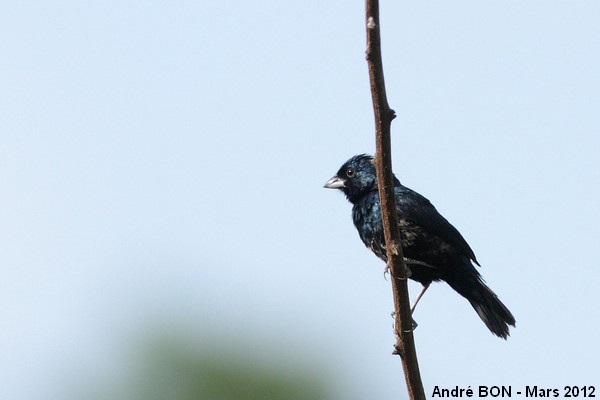
| Blue-black Grassquit (Volatinia jacarina (Linnaeus, 1766)) |

|
|
Scientific name: Volatinia jacarina (Linnaeus, 1766) Common name: Blue-black Grassquit French name: Jacarini noir Order: Passeriformes Family: Thraupidae Size: Body size: 10-11 cm; Weight: 9 g. Habitat: Clearings, woodland edges, open areas, grassy areas, parks and gardens. Food: Seeds and small insects. Nesting: Males perform spectacular jumps and nuptial display flights at the time the pairs are formed. The nest is a small rigid cup. It is not lined and located in a grass tuft or at the bottom of a shrub. There are two or three eggs per clutch. Migration: Sedentary. Some birds may move on short distances after the breeding period depending on food availability. Geographic area: Central America and South America, from south of Mexico to Paraguay and north of Chile and Argentina. |
Male Blue-black Grassquits show a black iridescent plumage. There is a white patch at the start of the wing but it is often only visible in flight. The bill is short and sharp. The upper mandible is dark grey, the lower mandible is paler. The legs are black. Females are very different. The upper side of the body is olive brown with slightly darker wings and tail. The underside is yellowish white. The flanks are striated with dark brown. There is a whitish eye ring. Juveniles are similar to females. |
| [To know more about the Blue-black Grassquit] [Top] |

|
I have shot this picture in the small village of Saül. The black iridescent colour indicate one male. The white patches at the start of the wings are not visible here. |